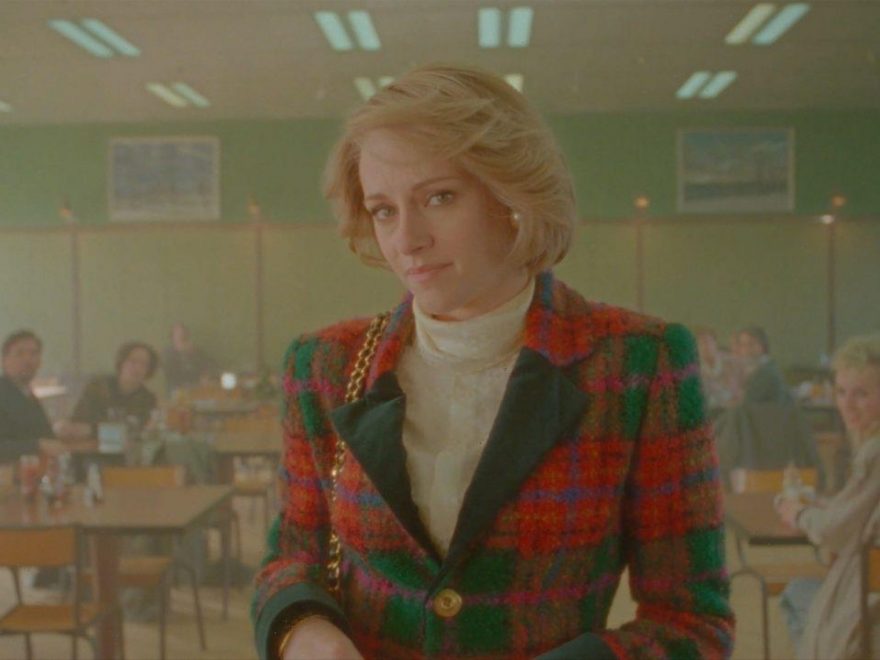Countless movies, television shows, and specials have been made around Diana, Princess of Wales. Director Pablo Larraín’s Spencer takes a different approach. He has no interest in being historically accurate. Rather, he wants to tell a story of what could have been. Steven Knight’s screenplay digs into the meat of how Diana felt with strong horror overtones. It doesn’t all work, but Kristen Stewart’s masterful performance elevates an otherwise solid, yet heavy-handed drama.
‘Spencer’ is ‘a fable from a true tragedy’

Diana (Stewart) decides to drive herself to the Sandringham estate in Norfolk, England for the 1991 Christmas holidays. The royal family is frustratingly waiting for her to arrive, as she tries to find her way. Her marriage with Prince Charles (Jack Farthing) is failing and it’s no secret. Divorce rumors are circling.
The typical traditions of eating, drinking, and hunting are all intact. However, something is different for Diana. She finds moments of happiness with her children, Prince William (Jack Nielen) and Prince Harry (Freddie Spry). But, she’s growing increasingly terrified of the consequences of pursuing freedom from the family. Spencer is an imagining of what might have happened during those days.
Princess Diana in a gothic horror tale

Spencer is a gothic horror tale at heart. The majority of the movie takes place at the Sandringham estate, which is a character of its own. Knight’s screenplay brings the audience into Diana’s ghostly experiences, including ones that are both real and metaphorical. The story never leaves her for long, which truly allows the viewer to get lost in her story. Spencer doesn’t introduce anything that we don’t already know, but it approaches it with different intentions.
The horror comes from the covert threats that linger in every scene. The walls have ears and Diana is never truly alone. The audience isn’t left alone with her for long, as she’s constantly nagged and interrupted. The staff is constantly trying to get her to move from one traditional event to the next, each requiring a very particular outfit. Every aspect of her day is controlled and her only moments of solace are when she gets quiet moments late at night with her children.
Spencer includes some philosophical moments, as Diana talks about time. She explains how the past and the present have become one and that there is no future. This is a particularly important conversation that holds weight with her sons but also has relevance to Diana’s story. Her experiences at the Sandringham estate blend the past and the present into an eerie world that seems stuck in time with no future at the end of the tunnel. Her marriage isn’t the only element lacking a future.
‘Spencer’ is uneven, yet intriguing

Spencer is heavy-handed with its symbolism. Some of it becomes a bit overbearing and repetitive with the point that it’s trying to make. As a result, Spencer could have been a bit trimmed down. There are some pacing lulls, but all of the technical qualities keep the movie engaging.
Stewart is an absolute knock-out. She captures Diana’s essence in a magnificent Oscar-worthy performance. However, Stewart isn’t just doing an impersonation. She makes the role her own and elevates Spencer into a special experience.
Larraín’s Spencer is technically exquisite. Jonny Greenwood’s original score is deeply haunting as it mixes with classical influences. Claire Mathon’s cinematography gorgeously highlights Diana. The colors and the movement place emphasis on all of the right attributes in the frame. Jacqueline Durran’s detailed costume design takes center stage. Larraín’s direction includes a lot of close-ups, creating a sense of claustrophobia that fits with Diana’s narrative.
Spencer explores the importance of information and identity as a currency. Knight’s screenplay has some intriguing themes, although they don’t quite manage to fill the movie’s runtime. Spencer is worth seeing based on Stewart’s impeccable performance and the movie’s gorgeous sense of style. However, the movie is a bit lacking regarding its nuance and depth. It’s a mood piece that is uplifted by its central performance and technical qualities.
Source: Read Full Article
